The Expedition followed the Lolo Trail, a historic Indian trade and hunting route across the Bitterroot Mountains to the Clearwater River. They returned by this route in 1806. The Lolo Trail is now a National Historic Landmark.
In early October 1805, Captains Meriwether Lewis and William Clark along with their Corps of Discovery paddled down the Clearwater River to merge with an even larger river, the Snake. They finally found their successful route to the far Pacific.
wwwwwwwwwwwwwwww
The juncture where the Clearwater meets the Snake is now the site of twin towns Lewiston, Idaho and Clarkston, Washington - and the head of navigation on a 500-mile stretch of river that most improbably opens Idaho to ocean navigation. Eight major dams and their adjoining lock systems, from Bonneville Dam in the Columbia River Gorge to Lower Granite Dam on the Snake River, allow Cruise West's small cruise ship to rise 738 vertical feet by journey's end.

8LEWIS & CLARK TRAIL
Clarkston, WA
Lewiston, ID
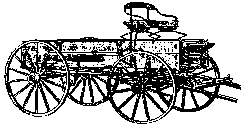
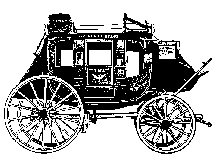

This page was last updated: February 1, 2010

Copyright © 2000 Larson Century Ranch, Inc. ~ All Rights Reserved
P. O. Box 1982
Clarkston, WA 99403
Telephone: 509-758-5445
FAX: 509-758-5701
E-Mail: Sales@LarsonCenturyRanch.com

Web Design: Design Carte
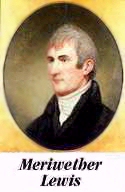
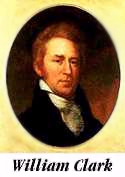

"... I have been wet and as cold in every part as I ever was in my life..." September 16, 1805
Captain Clark
"... we were entirely surrounded by those mountains from which to one unacquainted with them it would have seemed impossible ever to have escaped." June 27, 1806
Captain Clark

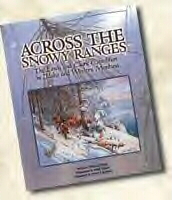

The story of the Lewis & Clark Expedition in the most difficult part of the entire route to the Pacific.
Click Here: Books
Clarkston, WA
A succession of treacherous rapids damaged the canoes, and while the canoes were being repaired the Corps dined on fish and dog.
It was then that the Captains made the discovery that their Shoshone guide, Toby, had slipped away during the night to rejoin his nation.
Piloting the expedition to the Columbia were two Nez Perce Indians, Twisted Hair and Tetoharsky.
October 7 - 14, 1805
Alpowai Interpretive Center
Chief Timothy State Park
Located 8 miles from Clarkston, Washington on US 12
The park is located on the site the Alpowai encampment of the Nez Perce Indian Tribe. It was the home of Chief Timothy, who was a trusted friend of the early settlers in the area. The Alpowai Interpretive Center is built near the original site of the village that existed in the mid 1800's. Exhibits include the story of Lewis and Clark's meeting with Nez Perce Indians.
For more information contact:
Chief Timothy State Park
Highway 12
Clarkston, WA 99403
Call: 1-509-758-9580
Lewiston, Idaho
Canoe Camp (Nez Perce NHP) - The Expedition camped here from September 26 to October 7, 1805 while building five canoes for their journey down the Clearwater, Snake, and Columbia Rivers. Interpretive sign.
Nez Perce National Historical Park - Park headquarters and visitor center.
The word Weippe was orginally spelled "Oy-ipe" by General Howard in his journals. A late Nez Perce historian said the name meant "very old place". The Nez Perce also say it may have something to do with a spring of water or camas ground.
The Weippe Prairie was also the scene of horse racing, games and other sports by the first inhabitants. This tradition is still carried on each year with the Annual Weippe Rodeo, an event for all cowboys or all cowboy-want-a-be's.
The town of Pierce was named for E.D. Pierce who discovered the first gold in Idaho in 1860. E. D. Pierce was also the first man to scale California's Mt. Shasta. Pierce and his party laid out the town and called it Pierce City. In the late spring of 1861 several thousand miners crossed the Weippe Prairie to the Pierce gold mining fields. By that summer there were 1600 claims filed in the Pierce district. The gold rush brought about the construction of Idaho's oldest government building, the Pierce Courthouse, which was erected in 1862 to register miner's claims. It is located one block east of today's Main Street at the corner of Court Street and First Ave.
In 1903 the government completed a survey, and soon another boom engulfed the district, timber became the real weath. On the west side of Main Street next to the town library, you will find a screened display that contains a bateau used on Clearwater River log drives. It is only one of four surviving in Idaho.
In 1805, the Lewis and Clark Corps of Discovery found there was no waterway to the Pacific Ocean. Instead, there were forests and mountains that were almost insurmountable. The Flathead Indians directed them to a 2000 year old trail leading to buffalo hunting grounds. Nez Perce hunting parties usually made their trek every two years. They stayed at the hunting grounds for months, then returned to their Paradise along the Clearwater corridor. The Lolo Trail stretching from the Idaho-Montana border near Highway 12 over the mountain ridges to Orofino, is part of that ancient trail.
The rugged mountains, the dense forest, the swift flowing rivers remain pristine, becoming a Paradise for visitors.
Points of Interest
Bald Mountain Ski Area
Lewis and Clark met Nez Perce Sept 20, 1805 at Quamis Flats.
Musselshell Meadow is last active camas patch for Nez Perce.
Samson Snyder built a telephone line from Greer to Weippe 1902.
Beaver Creek
Old Shoshone County Courthouse, 1862. Shoshone County's original courthouse and Idaho's earliest public building, still stands in Pierce.
J. Howard Bradbury Museum (logging memorbilia) Main Street, Pierce (208) 467-4670 or 464-2531. FREE Admission by appointment only.
Pierce Library Museum, 208 S. Main, Pierce (208) 464-2823, FREE Admission, M-TH 11-8, F 11-5
wwwwwwwwwwwwwwww
LODGING
wwwwwwwwwwwwwwww
Best Western
River Tree Inn
1257 Bridge Street
Clarkston, WA 99403
Reservations Call:
1-509-758-9551, 1-800-597-3621
Fax: 1-509-758-9551
Amenities:
Refrigerators in all rooms.
Non-smoking rooms. Two Non-smoking Suites
Fitness Room ~ Sauna ~ Hot Tub
All TV's with Remote & Showtime
Pool ~ BBQ Area
Continental Breakfast
Free Local Calls ~ Fax Service ~ Copy Service ~ Data Ports on All Phones

Lewis & Clark Expedition
Lewis & Clark Expedition